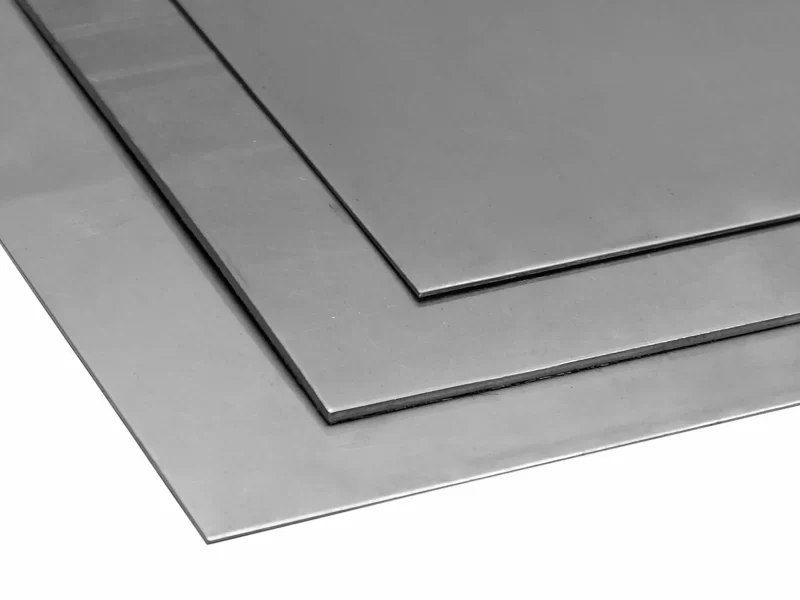
Stainless steel is an important material used in a wide range of fields, its corrosion resistance, high-temperature resistance, strength, and other characteristics make it unique in many areas, however, stainless steel is not a piece of iron, it is divided into a variety of types, each type has its unique composition and properties.
Commonly Used Stainless Steel Materials
Austenitic stainless steel
Austenitic stainless steel is the most widely used type of stainless steel, its chromium content is generally more than 16%, and nickel content is more than 1%. This stainless steel has good corrosion resistance, heat resistance, and welding performance, and has good plasticity and toughness. Common austenitic stainless steel is 201, 304, 316, and so on.
- 201 stainless steel: Containing low nickel and manganese, relatively poor corrosion resistance, but more affordable, mainly used for home and decoration.
- 304 stainless steel: Containing about 8% nickel, it has good corrosion resistance, high-temperature resistance, and welding performance, and it is the preferred material for food, medical, and other fields.
- 316 stainless steel: molybdenum is added based on 304 stainless steel, which makes it have better corrosion resistance and heat resistance, and it is especially suitable for marine environments, chemical equipment, and other fields.
Ferritic Stainless Steel
Ferritic stainless steel to ferrite as a matrix, its chromium content is generally greater than 12%, and the nickel content is lower. This stainless steel’s strength and hardness are high, but the toughness is relatively poor, and corrosion resistance is not as good as austenitic stainless steel. Common ferritic stainless steel 409, 430, and so on.
- 409 stainless steel: mainly used in automobile exhaust systems water heaters, etc., has a certain degree of corrosion resistance and high-temperature oxidation resistance.
- 430 stainless steel: high chromium content, good corrosion resistance, and magnetic, commonly used in kitchen equipment, and decorative materials.
Martensitic Stainless Steel
In martensitic stainless steel to martensite as a matrix, chromium content is generally more than 12%, and nickel content is lower. This kind of stainless steel’s strength and hardness are high, but poor toughness, and poor welding performance. Martensitic stainless steel is mainly used in areas requiring high hardness and resistance, such as cutting tools and bearings.
- 410 stainless steel: it is the most common martensitic stainless steel, suitable for the manufacture of cutting tools, springs, and so on.
- 440C stainless steel: has high hardness and wear resistance, commonly used in demanding surgical blades, bearings, etc…
Is Stainless Steel 304 Safe?
304 stainless steel, also known as 18/8 stainless steel, contains about 18% chromium and 8% nickel, which provides better corrosion resistance, wear resistance, high-temperature resistance, and beautiful appearance. Among the many types of stainless steel, 304 stainless steel is one of the most widely used because of its stable performance and moderate price.
Low Metal Element Precipitation
304 stainless steel releases minimal amounts of chromium and nickel during cooking, far below international food safety standards, making it safe for food contact.
Safe Chromium Content
Chromium in 304 stainless steel exists mainly as trivalent chromium, which is non-toxic and beneficial to the body. Toxic hexavalent chromium is not present under normal use.
Nickel Safety
Nickel in 304 stainless steel is in a metallic form that does not cause allergic reactions. Nickel compounds, which may cause allergies, are absent.
Antibacterial Properties
304 stainless steel has natural antibacterial properties, as its metal components can damage bacterial cell walls, inhibiting growth and making it ideal for kitchen use.
How to Ensure the Safety of 304 Stainless Steel
Correct Purchase of Stainless Steel Products
When consumers buy stainless steel products, they should choose formal channels and well-known brands to ensure that the products comply with national food safety standards. In addition, you can also check the product identification to understand the stainless steel material, model, and other information.
Reasonable Use of Stainless Steel Products
When using stainless steel products, one should avoid salt, alkali, and other corrosive substances stored in stainless steel products for a long time, so as not to affect the corrosion resistance of stainless steel; at the same time, one should avoid using hard objects to scrape the surface of stainless steel products, so as not to damage the surface of the protective film, resulting in the precipitation of metal elements.
Regular Cleaning and Maintenance
Regular cleaning and maintenance of stainless steel products can maintain their surface luster and antibacterial properties. Neutral detergent can be used when cleaning, avoid using chlorine-containing detergents, so as not to cause corrosion on the surface of stainless steel.
Pay Attention to Cooking Methods
When using stainless steel pots and frying pans for cooking, try to avoid high-temperature cooking for a long time to avoid precipitation of metal elements. In addition, you can properly add cooking oil to reduce the direct contact between food and stainless steel surfaces.
결론
304 stainless steel, if used reasonably and maintained properly, will bring convenience and health to our lives. Household products made of 304 stainless steel are loved by more and more consumers for their excellent quality, beautiful appearance, and environmental friendliness choosing household products, you may want to consider this ‘high-quality material to add quality and aesthetic to your home life! A perfect blend of quality and aesthetics for your home life.
